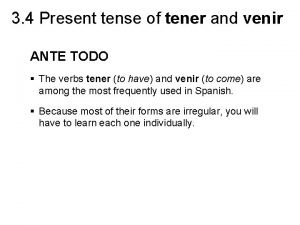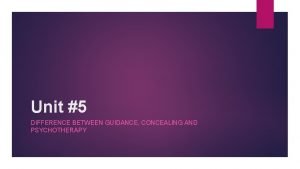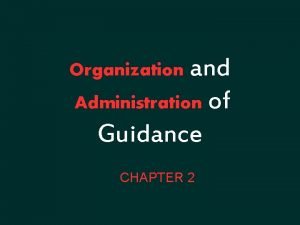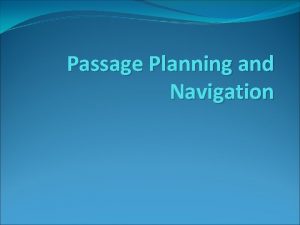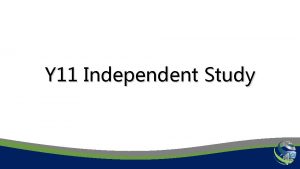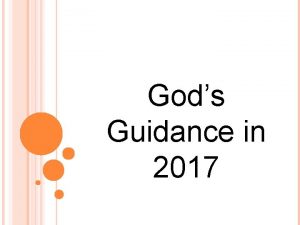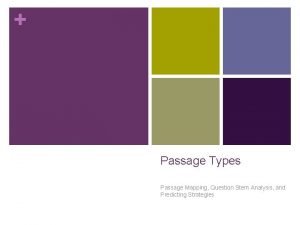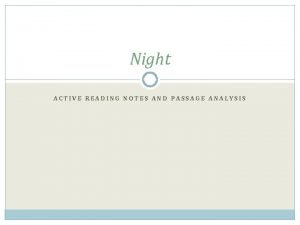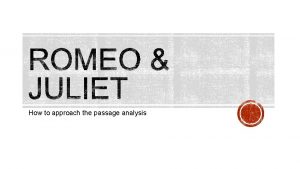3 Purpose To provide guidance and deconflict Passage

















- Slides: 17


3

Purpose To provide guidance and de-conflict Passage of Lines procedures for the 505 th RCT Light/Heavy Task Force. 3

References 1. 505 th PIR TACSOP, Appendix 3 (Passage of Lines), Annex C (Maneuver), 18 June 2001 2. FM 3 -90 Tactics, 4 July 2001 3

Passage of Lines • A tactical enabling operation in which one unit moves through another unit’s positions with the intent of moving into or out of enemy contact. • Conducted to continue an attack or conduct a counterattack, retrograde security or main battle forces or anytime one unit cannot bypass another. • Transfers responsibility of an area of operations (AO) between two commanders 3

Passage of Lines A passage of lines is conducted under two basic conditions: 1. A Forward Passage of Lines occurs when a unit passes through another unit’s position while moving toward the enemy. 2. A Rearward Passage of Lines occurs when a unit passes through another unit’s position while moving away from the enemy. 3

Control Measures Passage Lane: A lane through an enemy or friendly obstacle that provides safe passage for a passing force. Gap: An area free of armed mines or obstacles whose width and direction allow a friendly force to pass through the area containing obstacles while dispersed in a tactical formation. Passage Point: is a specifically designated place where the passing units pass through the stationary unit. PP 1 3

Planning Considerations • Higher HQ will designate: -Subsequent missions -When and where passage of command takes place -Start and finish times -Contact points between units -Control measures and graphics • Designated units will coordinate: -Intelligence and combat information -Direct / indirect fires and close air support plans -Security measure during the passage -All Control Measures -Air defense plan -Logistics support 3

Forward Passage of Lines • The purpose of a forward passage of lines is to move forces forward to conduct operations. • Ensures the maintenance of contact with the enemy while allowing the relief of previously committed forces. • Stationary force must control and secure the AO far enough to its front that the moving force can pass through the stationary force and reform into a combat formation prior to contact with the enemy force. • Support by the stationary force ends when the combat elements of the moving force, including the reserve, have moved beyond direct fire range. 3

Forward Passage of Lines 3 OBJ Orange PL Green PP 5 PP 4 FEBA RP 1 RP 2 PP 6 FEBA RP 3 SCT SP A AA Khaki SP B SP C

Rearward Passage of Lines • Continues the defense or retrograde operation, maintaining enemy contact while allowing for recovery of security or other forward forces. • May or may not be conducted under enemy pressure. • Close coordination between the two commanders is crucial. • Stationary unit must identify multiple routes through its AO. • CPs should co-locate for best C 2, if possible (Will be difficult/impractical with Light/Heavy TF) 3

Rearward Passage of Lines PL Wayne Passed Scouts pick up battle from passing units 2 PL Joe (BH) 1 SCT PL Joe (BH) Passing unit Scouts identify unit at Passage Point PP 3 Passing unit PP deploys into 4 3 column SP A FEBA RTE White Stationary units overwatch passing units SP B RTE Red FEBA AA Khaki

Command Control • Upon receipt of WARNO, units will make immediate contact. Contact will always be made from moving units to stationary units. • Establish and maintain liaison. • Moving unit will co-locate its TAC CP with the stationary units TAC CP until Battle Hand-Over (BHO) is complete. • Coordination will be established to provide: -Criteria for BHO -Selection of CP for moving unit -Exchange of communications & intelligence plans -Reconnaissance of routes, passage points and patrols -Control and security measures (marking SOP for lead/ trail vehicles of Heavy TF) -Time and location for passage of command -Administrative and logistics support (Light TF does not have the ability to support Heavy TF during passage, Support must be internal) -Fire and Signal support 3

Maneuver • Priority of routes is to unit executing passage. • Traffic control is the responsibility of the stationary unit. • Multiple routes should be used to reduce vulnerability. • BHO is determined by mutual agreement of commanders. • Stationary unit provides fire support until BHO. • Necessary control measures: -Passage points -Battle Hand-Over Line -CP locations -Routes -Contact points 3

Fire Support • During passage of lines: -Unit in contact is responsible for fire support until BHO -Mission of fire support will be coordinated between the two commanders -Artillery unit will normally support the moving unit until BHO • During withdrawal: -Moving Artillery unit is responsible for fire support until BHO -If a rearward passage of lines is, the mission of the artillery battalion that is withdrawing may be changed on the recommendation of the Force Artillery Commander 3

BOS • ADA: -Position vicinity POL • M/C/S: Stationary unit provides -Guides -Gapping of minefields Intel: Stationary unit provides -Known and suspected enemy locations -Recent enemy activities -Terrain information -Obstacle information CSS: Stationary unit provides -Evacuation of casualties and EPWs -Civilian control -Traffic control on routes - Use of unit facilities (water, fuel points) 3

Considerations / Issues • 1 -64 may need to provide additional AD coverage along passage lanes. • Austere III, IV and MEDEVAC capability • Recognition signals Day Near. FM Far. VS-17 (front armor) • Weapons orientation Night FM 2 X IR Flashes 3
 Incisal guidance and condylar guidance
Incisal guidance and condylar guidance Examples of indirect guidance
Examples of indirect guidance The author probably wrote this passage to
The author probably wrote this passage to Purpose sentence
Purpose sentence General purpose specific purpose central idea
General purpose specific purpose central idea Tener venir
Tener venir A dermatologist and an oncologist both provide
A dermatologist and an oncologist both provide Semaphore provides a primitive yet powerful and flexible
Semaphore provides a primitive yet powerful and flexible The difference between guidance and counselling
The difference between guidance and counselling Missouri guidance lessons
Missouri guidance lessons Digital advice and guidance tools
Digital advice and guidance tools History of counseling in the philippines timeline
History of counseling in the philippines timeline Difference between counselling and guidance
Difference between counselling and guidance Characteristics of non directive counselling
Characteristics of non directive counselling National guidance on falls prevention scotland
National guidance on falls prevention scotland Structured guidance and supports
Structured guidance and supports Organization and administration of guidance
Organization and administration of guidance Direct and indirect guidance chapter 14
Direct and indirect guidance chapter 14





